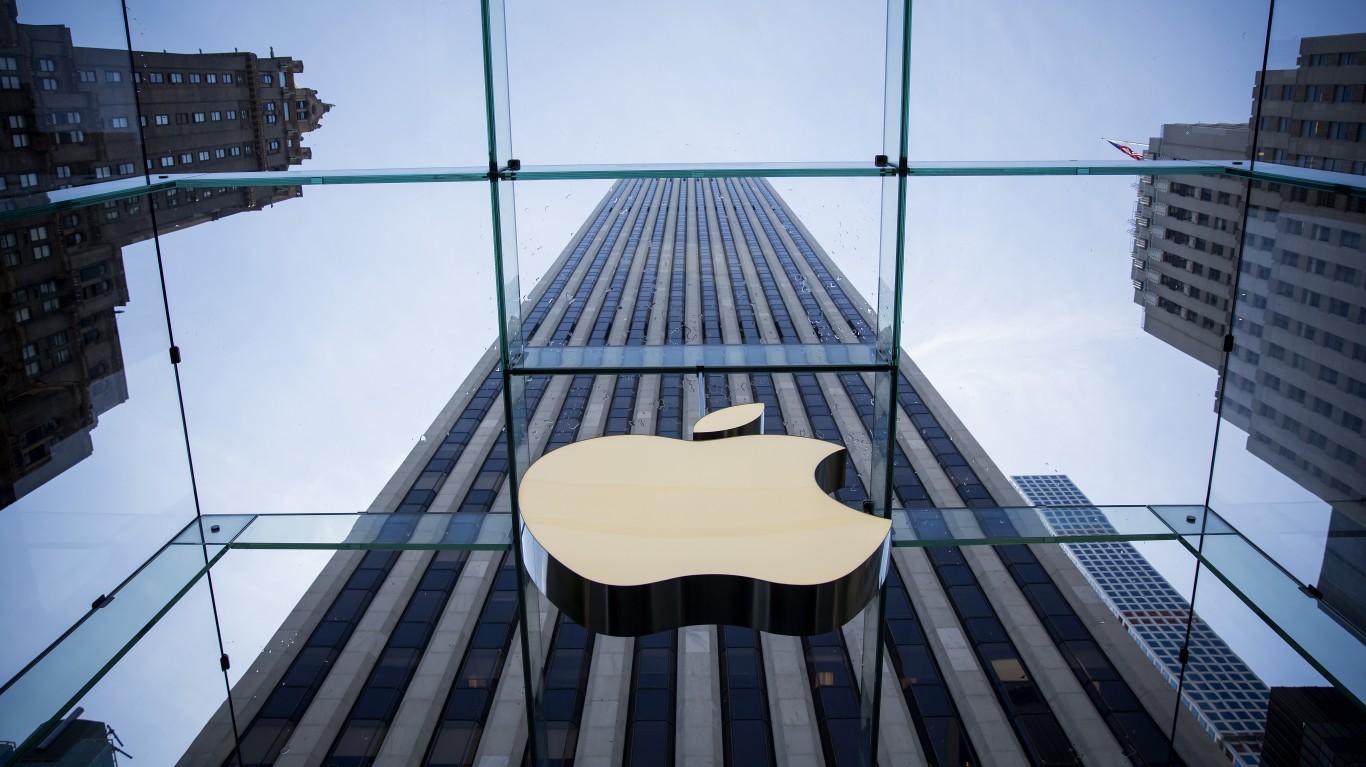
Cash has been an issue for many companies during the coronavirus crisis, leading to a hot corporate bond market. Even companies with huge cash stockpiles, like Apple Inc. (NASDAQ: AAPL), have joined the game. In its first-quarter earnings, the company reported holding $192.8 billion in cash.
Still, Apple borrowed $8.5 billion Monday in a four-part bond deal. Why? Because right now, money is cheap.
The tech giant will use the funds for working capital, stock buybacks and dividends, and other purposes. The Cupertino, California-based tech giant’s notes will mature in 2023, 2025, 2030 and 2050.
Besides Apple, Monday was a busy day for corporate borrowing. Starbucks Corp. (NASDAQ: SBUX) raised $3 billion, while Amgen Inc. (NASDAQ: AMGN) raised about $4 billion.
New Records for Corporate Debt
U.S. companies raised $162.7 billion through corporate bonds in April, according to Refinitiv, a provider of global financial data. Europe was not far behind, raising $83.2 billion. This follows moves by the Federal Reserve and central banks in other countries to lower borrowing costs.
“Apple’s offering illustrates how companies with the best credit ratings are boosting shareholder returns by tapping cheap debt made available through the Fed’s backstopping of the credit markets,” according to Reuters. In the first quarter, Apple spent $38.5 billion on stock repurchases.
Going forward, the company expects to buy back more shares, adding $50 billion to its existing share repurchase program. This contrasts with some other companies that have suspended buybacks because of the downturn. Apple also announced a dividend of $0.82 per share, payable May 14. The company is clearly confident about its prospects.
But for other companies, raising cash is more about survival. Last week, Boeing Co. (NYSE: BA) raised $25 billion, the largest investment-grade bond issue so far this year. In doing so, Boeing avoided tapping into a government bailout fund.
Struggling Ford Motor Co. (NYSE: F) recently raised $8 billion after reporting $2 billion in first-quarter losses. With its factories closed, the automaker has been bleeding cash.
What’s Next for Apple?
Apple shares topped the $300 mark Tuesday before closing at $297.56 (up 1.5%). The stock remains on the Buy or Hold list for most analysts, with a 52-week price range of $170.27 to $327.85.
Some analysts think the company’s cheaper iPhone SE, which debuted last month, could be the right product for a market with depressed consumer spending. The device starts at $399, compared to higher-end iPhone 11 models, which top $1,000.
The iPhone SE has a smaller screen, 4.7 inches. Remarkably, the cheaper model contains the powerful A13 chip, which is also featured in the iPhone 11. The chip provides incredible speed and powers many, but not all, of the same photo and video effects iPhone 11 users love. Planning for the cheaper model commenced long before the pandemic, but the timing seems good … assuming consumers are willing to open their wallets for any reason in this environment.
The company warned that portable sales could take a hit. “On iPhone and Wearables, we expect a year-over-year revenue performance to worsen in the June quarter, relative to the March quarter,” said Apple CFO Luca Maestri, on a conference call with analysts last week. But the company expects higher Mac and iPad sales as stuck-at-home consumers upgrade those devices.
China remains a question mark because both Apple’s supply chain and Chinese consumers have been impacted. Lack of supply of iPhones, many of them made in China, will be felt across the world. In the most recently reported quarter, Greater China revenue was $14 billion, out of Apple’s $92 billion total revenue. The domino effect of lower supply could undermine sales.
CEO Tim Cook did not supply guidance for the current quarter, noting the lack of visibility and uncertainty in the short term. The consensus estimates call for $2.07 in EPS on $51.54 billion in revenue for the quarter.
The iPhone 12 was expected later this year, but it’s not known if the coronavirus will change that timing. Apple typically does a huge media show for major product releases but will have to rethink that if social distancing is still in force.
Thank you for reading! Have some feedback for us?
Contact the 24/7 Wall St. editorial team.



